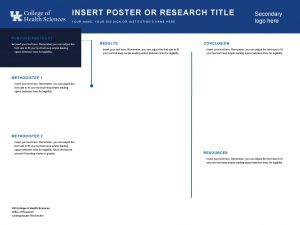Cancer Education 2014 INSERT NAME TITLE INSERT ORGANIZATION
![Cancer Education 2014 [INSERT NAME & TITLE] [INSERT ORGANIZATION] [INSERT DATE] Cancer Education 2014 [INSERT NAME & TITLE] [INSERT ORGANIZATION] [INSERT DATE]](https://slidetodoc.com/presentation_image/581ab189536ee6bdd91a6d45dd38a9d6/image-1.jpg)












































- Slides: 45
![Cancer Education 2014 INSERT NAME TITLE INSERT ORGANIZATION INSERT DATE Cancer Education 2014 [INSERT NAME & TITLE] [INSERT ORGANIZATION] [INSERT DATE]](https://slidetodoc.com/presentation_image/581ab189536ee6bdd91a6d45dd38a9d6/image-1.jpg)
Cancer Education 2014 [INSERT NAME & TITLE] [INSERT ORGANIZATION] [INSERT DATE]

What is Cancer? � The result of out-of-control growth of abnormal cells � Normal body cells grow, divide and die in an orderly fashion � Cancer cells continue to grow and divide, instead of dying They outlive normal cells and continue to form new abnormal cells


Types of Cancer �Carcinomas The most common type of cancer �Sarcomas �Lymphomas �Leukemias

What’s in a Name? � Primary Site Place where cancer starts � Metastasize Can spread to other parts of the body � Naming Always named for the place it began If breast cancer spreads to the liver it is still called breast cancer (Not liver)

Cancer in Numbers �Second most common cause of death in U. S. Heart Disease is #1 �Half of all men, and a third of all women, will develop cancer during their lifetime �Approximately 2 in 5 Hoosiers now living will eventually have cancer �Cost of Cancer $216. 6 Billion (2009)

Cancer in Numbers � Estimated New Cancer Cases for 2014 US – 1, 665, 540 IN – 35, 560 � Estimated Deaths for 2014 585, 720 Americans � Nearly one in every four deaths 13, 370 Hoosiers � 23% of all Hoosier deaths in 2013 � Estimated New Cases in Indiana for 2014 Female Breast – 4, 590 Cervical – 260 Colon– 3, 020 Melanoma – 1, 550 Lung/Bronchus – 5, 540 Prostate – 4, 390


Risk Factors and Risk Reduction � Nearly all cancers of the lung, bladder, mouth, and skin could be prevented � Many cancer deaths (50 -75%) are related to personal behaviors or habits � 30% or more of all cancer deaths related to cigarette smoking � 30% of all cancer deaths in the U. S. are related to poor nutrition & inactivity leading to obesity

Strategies for Cancer Prevention � Stop using tobacco! � Maintain a reasonable weight � Adopt a physically active lifestyle � Eat a healthy diet, with a focus on plant fruits and vegetables. The more COLOR the more nutrients. � Increase fiber and reduce fat � Limit alcohol consumption � Limit exposure to the sun

Lifestyle Behaviors Affect Our Risk for Cancer o Of all Indiana adults • 22% of adults smoke (2013) • 65% are considered overweight or obese (2013) • 56% of adults get less than 150 minutes of physical activity a week (2013) o Of all Indiana High School Students • 13. 7% smoke (2013) • 14% Overweight/obese (2011) • 44% 60 minutes of Physical Activity a day (2011)

Why is weight so important? �Weight contributes to 188, 000 cancer deaths each year. �One-third of the cancer deaths are attributed to poor nutrition, physical inactivity, overweight and obesity.

Early Detection/Screening �Looking for cancer BEFORE there are symptoms �May identify early cases of cancer that might never have become clinically apparent

What can you do? �Have annual physicals (Pap test, CBE, skin exams, vaccinations) �Avoid alcohol and tobacco products �Limit exposure to direct sunlight �Be aware of your body!

What is Testicular Cancer? �Testicular cancer is cancer in one or both testicles �It usually occurs in young men �This type of cancer can be treated and very often cured

Testicular Cancer Facts � American Cancer Society estimated that there will be 8, 820 new cases of testicular cancer in 2014 � An estimated 380 men will die of testicular cancer in 2014

Types of Testicular Cancer � More than 90% of cancers of the testicle develop in special cells known as germ cells. � These are the cells that make sperm. There are two main types of germ cell tumors in men: Seminomas Non-seminomas � Many testicular cancers contain both seminoma and non- seminoma cells. � These mixed germ cell tumors are treated as non-seminomas because they grow and spread like non-seminomas.

Risk Factors � Age About 9 of 10 occur in men 20 -54 years of age. It can affect males of all ages (including infants and elderly men) � Early Puberty Men who mature early have a higher risk due to high hormone levels � Family History If a family history then higher risk of developing the cancer

Risk Factors � Body Size/Type Some studies have found that taller men have a somewhat higher risk, but others have not � Race White men have 5 -10 times higher risk than African-American men, and more than twice that of Asian-American men � Undescended Testicles More likely to develop in men whose testicles have not descended (3 -17 times more likely)

Undescended Testicle

Warning Signs � Small hard, painless lump on the front or side of the testicle � Swelling or tenderness in the body (groin, breast or neck) � Sudden collection of fluid or blood in the scrotum � Change in the way the testicle feels � Enlarged testicle � Dull ache in the groin � Back pain/Upset Stomach � Urinary Problems

Testicular Self Awareness � Men need to be aware of testicular cancer and to see a doctor right away if they find a lump on a testicle. � Regular testicular self-exams have not been studied enough to show if they lower the risk of dying from this cancer. � Men with risk factors, such as an undescended testicle, previous testicular cancer, or a family member who has had this cancer should seriously think about monthly selfexams. If you have risk factors, talk it over with a doctor.

Testicular self exam � Once a month � After a shower, examine each testicle gently with both hands � It is NORMAL for one testicle to be larger than the other � Should not feel any pain when doing the exam

Testicular Self-Exam � Examine each testicle with both hands � Place the index and middle fingers under the testicle with the thumbs on top � Roll the testicle gently between the thumbs and fingers � Find the epididymis (soft tube-like structure behind the testicle) Become familiar with this structure so as not to confuse it for a lump � Cancerous lumps are usually found on the sides of the testicle but can be up front � If you feel a lump or have other signs see a doctor right away



Skin Cancer Facts � There are three types of skin cancer � Early detection and treatment are very important with all types cancer � More than TWO million cases of skin cancer are diagnosed in the United States each year.

Basal and Squamous Cell Carcinoma � Basal Cell (Most common form) 80% of new skin cancer cases � 90% found on the head, neck, and other high exposure areas High cure rate � Once diagnosed 40% chance of getting another basal cell cancer within five years � Squamous Cell (2 nd most common form) 90% cure rate More than 300, 000 new cases diagnosed annually

Melanoma �Melanoma is the most deadly form of skin cancer �One American dies of melanoma every hour �Melanoma is the most common form of cancer for 25 -29 year-olds �The second most common form of cancer for 15 -29 year-olds

Melanoma � 76, 690 expected new diagnoses in 2013 � Ten times more common in whites than African- Americans � Before age of 40 Rates are higher in women � After age of 40 Rates are almost two times higher in men � Rates are increasing by almost 3% per year since 2004

Melanoma Survival Rate � Five year survival rate is 99% (if tumor is spotted when only a spot on the skin � Five year survival rate drops to 15% if the fast growing cancer has spread



Avoid Sun Damage � Wear hats and protective clothing when in the sun � Do NOT visit tanning booths. Their effects can be as dangerous as the sun’s UV rays � Wear sunscreen that protects from both UVA and UVB rays and use an SPF of 30 or higher (Natural ingredients like zinc oxide are helpful) � Seek shade during the hours of 10: 00 am to 4: 00 pm if you do not have access to protective clothing � Wear sunglasses to protect against ocular melanoma

Skin Cancer Summary � Look for new spots About 70% do not emerge from moles � Women watch your LEGS Women tend to get melanomas on their legs and calves � Guys should monitor the top of your ears and head especially closely Many hats for men don't shade the ears, and balding men often forget to protect their hairless pates. Both are common sites for squamous and basal cell carcinoma. � Don't overlook the places where the sun doesn't shine Many melanomas show up in armpits, hands, belly buttons, underneath hair, the bottom of the feet, and other places that don't get much direct light � Have a second pair of eyes look

Breast Cancer Facts � Breast cancer is the most common type of cancer found in women in the United States � It is the 2 nd leading cause of cancer death among women age 40 -59 � 1 in 8 women will develop breast cancer in their lifetime � When breast cancer is confined to the breast the 5 year survival rate is over 98 percent � A woman dies from breast cancer every 74 seconds around the world � Men can get breast cancer! Rare, but does happen. 2, 000 men will be diagnosed this year, 400 will die (Nationally)

Risk Factors • Risk factors do not cause breast cancer • Risk factors are associated with an increased chance of getting breast cancer • Some risk factors can be controlled and others can’t be changed

Risk Factors �Two Major Risk Factors Being a Woman Getting Older �Other Risk Factors? �Modifiable factors can lower risk Breastfeeding, physical activity, and maintaining a healthy body weight

Breast Cancer Symptoms in Men Possible symptoms of breast cancer to watch for include: A lump or swelling, which is usually (but not always) painless Skin dimpling or puckering Nipple retraction (turning inward) Redness or scaling of the nipple or breast skin Discharge from the nipple If you notice any breast changes, you should see your health care professional as soon as possible.

HPV and Cancer �Genital human papillomavirus (HPV) is a common virus. �Most sexually active people in the U. S. will have HPV at some time in their lives. �There are more than 40 types of HPV that are passed on through sexual contact. �These types can infect the genital areas of men, including the skin on and around the penis or anus. They can also infect the mouth and throat.

HPV and Cancers of the penis, anus and oropharynx are uncommon, and only a subset of these cancers are actually related to HPV. Each year in the U. S. there about: � 400 men who get HPV-related cancer of the penis � 1, 500 men who get HPV-related cancer of the anus � 5, 600 men who get cancers of the oropharynx (back of throat) Many of these cancers are also related to tobacco and alcohol use

HPV and Cancer �Currently, there is no HPV test recommended for men. �The only approved HPV tests on the market are for screening women for cervical cancer. �They are not useful for screening for HPV-related cancers or genital warts in men.

HPV Vaccination � HPV vaccine available boys and men ages 11 -26 Can protect against the types of HPV that most commonly cause problems in men � CDC recommendation All boys ages 11 or 12 Men through age 21, who have not already received all three doses � The HPV vaccine is very safe and effective � Studies show that the vaccine can protect men against genital warts and anal cancers. Other protections likely, including cancers of the penis and oropharynx (back of throat, including base of tongue and tonsils) However, no vaccine studies for these outcomes

Possible Signs of Cancer � Change in bowel or bladder habits � A sore that does not heal � Unusual bleeding or discharge � Thickening or lumps in breast or elsewhere � Indigestion or problems with swallowing � Obvious change on wart or mole � Nagging cough or hoarseness Several types of cancer MAY NOT provide symptoms before they cause changes in the body

Remember �Have annual physicals (Pap test, CBE, skin exams). �Avoid alcohol and tobacco products (including secondhand smoke). �Limit exposure to direct sunlight. Know your body!
 Vertical
Vertical Insert the sub title of your presentation
Insert the sub title of your presentation By name title
By name title Name three lines
Name three lines 2014 pearson education inc
2014 pearson education inc Give two pieces
Give two pieces 2014 pearson education inc
2014 pearson education inc 2014 pearson education inc
2014 pearson education inc 2014 pearson education inc
2014 pearson education inc 2014 pearson education inc
2014 pearson education inc 2014 pearson education inc
2014 pearson education inc 2014 pearson education inc
2014 pearson education inc 2014 pearson education inc
2014 pearson education inc 2014 pearson education inc
2014 pearson education inc 2014 pearson education inc
2014 pearson education inc 2014 pearson education inc
2014 pearson education inc 2014 pearson education inc
2014 pearson education inc 2014 pearson education inc
2014 pearson education inc 2014 pearson education inc
2014 pearson education inc 2014 pearson education inc
2014 pearson education inc 2014 pearson education inc
2014 pearson education inc 2014 pearson education inc
2014 pearson education inc 2014 pearson education inc
2014 pearson education inc Copyright 2014 pearson education inc
Copyright 2014 pearson education inc 2014 pearson education inc
2014 pearson education inc 2014 pearson education inc
2014 pearson education inc Features of rte
Features of rte 2014 pearson education inc
2014 pearson education inc 2014 pearson education inc
2014 pearson education inc 2014 pearson education inc
2014 pearson education inc National core curriculum for basic education
National core curriculum for basic education Mconline login 2020
Mconline login 2020 2014 pearson education inc
2014 pearson education inc 2014 pearson education inc
2014 pearson education inc 2014 pearson education inc
2014 pearson education inc 2014 pearson education inc
2014 pearson education inc 2014 pearson education inc
2014 pearson education inc 2014 pearson education inc
2014 pearson education inc Completing reports and proposals
Completing reports and proposals Title title
Title title Insert name here logo
Insert name here logo Insert your brand here
Insert your brand here Insert your name
Insert your name Insert company name
Insert company name Add your title here
Add your title here Hurricane insert name
Hurricane insert name




































































